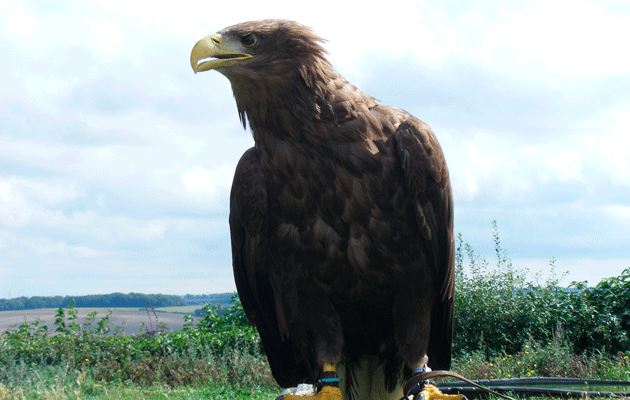Win CENS ProFlex DX5 earplugs worth £1,149 – enter here
Reviving bird species isn’t always good news
Reviving certain species of birds is not good news for some of their more lightweight relatives, says Lindsay Waddel

One of the relatively new concepts I simply cannot come to terms with is the more than misguided notion of “re-wilding“. I’m not sure who first coined the term, but they must have been thinking well outside the box to consider that, in this tiny island, with its ever increasing millions of people, we could actually turn the clock back to the days of lynx and wolves. The reason they became extinct was simply that we cannot live in harmony with some forms of wildlife because they do serious harm to us and our livestock.
It is true that we have successfully reintroduced some notable species of birds, namely the red kite and the sea eagle, but even the latter would appear to have its downside. I am not talking about the loss of lambs, piglets or any other domestic animals, which, if I was a sea eagle, I would probably view as being quite acceptable food items. No, far more interesting is the fact that at least one sea eagle has displaced a golden eagle and taken over its territory. So, the majestic golden eagle, long protected by many highland stalkers and keepers, has been ousted by another type because of man; no more no less, it is their fault, the reintroducers.
I wonder if that concept had ever occurred to the conservationists who decided to bring back this “iconic” bird. More importantly, when will the sea eagle stop ousting its smaller cousin? If it has the same effect that the buzzard has had on the kestrel, then the golden eagle is in for some hard years in various areas of Scotland.
A good big ’un will always sadly beat a good little ’un, is an age-old saying, and sadly this is the truth when it comes to birds of prey. There are many in the bird world who longed for the day that all species of raptor would be free from persecution by man, and that their populations would soar as high as the birds themselves. Well, the buzzard is doing just that, with its huge 44,000 per cent- plus increase in the East Midlands over the past 20 years. There will be losers in the others’ rise, make no mistake.
We see the odd piece about the osprey chick being taken from the nest, just because there happened to be a camera there and no-one can hide the fact. Or we hear of a rare visitor being whipped off its feet in the tidal mud, but again there were a lot of people watching the rare wader, otherwise we would never have known about it. Harrier chicks have been predated, and no doubt millions of other prey items have simply been killed and scoffed without trace, and because no-one was watching them we never hear or read about it. But it goes on, otherwise the hundreds of thousands of buzzards would simply die.
The fact that countless educated individuals will have us believe that these large birds do not kill things of any size is ridiculous. Natural England had to issue a licence to have some caught because at least one was killing free-range hens. Now that is quite a feast for a buzzard compared with many other species of birds; in fact there is no comparison in weight terms between a hen and the vast majority of wild birds in this country.
It all begs the question, just what impact is the rise of the super raptors having on all their smaller cousins? I am aware that many ornithologists have no real love for goshawks and eagle owls for that very reason, they are too fond of their relatives, as a meal that is.
So, the next time you hear of yet another “rare” bird of prey disappearing, with all the brainwashed media stating that it might have been shot — Montagu’s harrier in Norfolk for example — consider that it might just have been killed and eaten by one of its relatives, or a mammalian predator. There is increasing scientific evidence that that is exactly what is happening, especially to those raptors that may look impressive, but are lightweights when it comes to the fight. The fact is, they, the lightweights, are not that rare at the moment, but they may well become so, and it will not be at the hands of gamekeepers or the shooting community as a whole, but because of the actions of conservationists who would have nothing managed; they’d leave it to nature. You really have to be careful what you wish for!
As it happens, the grouse moors are doing their best to buffer feed countless birds of prey this season. Because of the high numbers of grouse, harriers and buzzards have made the moors their home for the time being, as there is an easy meal around every heather tussock.
Related Articles
Get the latest news delivered direct to your door
Subscribe to Shooting Times & Country
Discover the ultimate companion for field sports enthusiasts with Shooting Times & Country Magazine, the UK’s leading weekly publication that has been at the forefront of shooting culture since 1882. Subscribers gain access to expert tips, comprehensive gear reviews, seasonal advice and a vibrant community of like-minded shooters.
Save on shop price when you subscribe with weekly issues featuring in-depth articles on gundog training, exclusive member offers and access to the digital back issue library. A Shooting Times & Country subscription is more than a magazine, don’t just read about the countryside; immerse yourself in its most authoritative and engaging publication.







